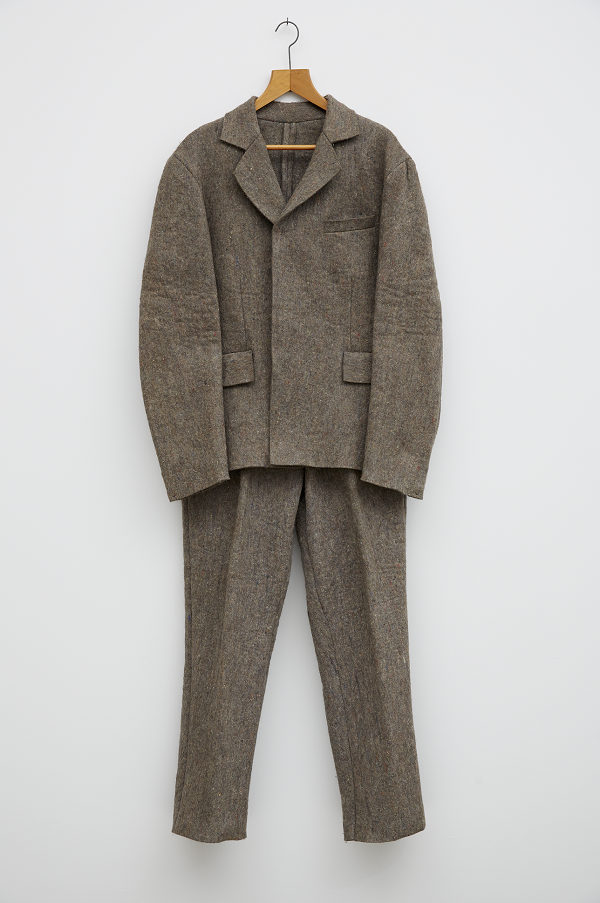Galleries
Sean Kelly Brings Group of Iconic Joseph Beuys Artworks to Armory, Felt Suit Already Sold
Sean Kelly gallery will present a special exhibition of the work of German conceptual artist Joseph Beuys at the Armory Show.

Sean Kelly gallery will present a special exhibition of the work of German conceptual artist Joseph Beuys at the Armory Show.

Rozalia Jovanovic

When the Amory Show opens on Thursday, Sean Kelly’s booth (501) will be hosting a special show of the work of German conceptual artist Joseph Beuys. “I think at the moment, he’s an artist who is somewhat overlooked and is in need of a really good purposeful reexamination,” Kelly told artnet News.
The cabinet exhibition will display some 20 multiples and editions by the sculptor, activist, and performance artist, from a total of roughly 130 Kelly has obtained from a private American collection. Filling eight-square-feet of booth space over and above Kelly’s regular Armory booth (which will house works by gallery artists including Mariko Mori, Marina Abramović, and Rebecca Horn) will be iconic Beuys items like his 1970 Filzanzug (felt suit) and, from the same year, his Rivoluzione Siamo Noi (We Are the Revolution), a life-sized photograph of Beuys walking confrontationally toward the camera. Also on display will be Cuprum 0,3% unguentum metallicum praeparatum, (1978–1986), a significant piece composed of beeswax with traces of copper; Ja, ja, ja, ja, ja, nee, nee, nee, nee, nee (Yes, yes, yes, yes, yes, no, no, no, no, no), a sculptural block of gray felt housing a 32-minute audio recording; and ohne die Rose tun wir’s nicht (We Won’t Do It without the Rose) (1972), a lithograph from a photo of Beuys taken by Wilfried Bauer at Documenta 5.
The good thing for Beuys fans is that the works on offer, including some unique works the gallery owns, will vary in price from roughly $1,000 for such works as Ja Ja Ja Ja Ja, Nee, Nee, Nee, Nee, Nee to as much as $100,000 for other works. Of the 130 items from the private collection, roughly 60 have already sold.
It’s likely that the felt suit is Beuys’s most famous multiple. It was created in an edition of 100 and can be traced back to the 1970 performance Action the Dead Mouse/Isolation Unit, for which Beuys wore a similar suit with lengthened arms and legs. “Perhaps one comes across them at auction every few years,” Kelly said, noting that many of the suits are in institutional collections like the Walker Art Center and the Museum of Modern Art. “But one doesn’t come across them that much. They’re certainly not common.” Since 1989, the felt suit has been up at auction 22 times, with the first during that time frame selling in 1989 for $66,000 (within its estimate of $60,000–80,000) at Sotheby’s New York. Market interest in the felt suit saw a dip in the early to mid 1990s with several lots being bought in and several selling in the $30,000 range. By the mid-2000s, the market for the felt suits began to steadily increase, and the past five auctions have seen the suits exceeding their high auction estimates, with the last one, at Phillips in New York in 2012, breaking the suit’s record at auction when it sold for $96,100.
Kelly told artnet News that he sold the felt suit for above its record price during the last week of February.
“One of the interesting things with Beuys’s editions and multiples is that they were very much about his democratic actions, of his art being out in the world and touching a lot of peoples’ lives,” Kelly said. Multiples were known to be vital to Beuys’s practice and they were often relics of his performances or emblems symbolizing his ideas, rather than conventional sculptural works.
“He’s such an important artist and there hasn’t been a major show of his here for some time,” Kelly said. “It’s, in my opinion, way overdue.”

Joseph Beuys, We Won’t Do It without the Rose (1972)
Photo: Jason Wyche, courtesy Sean Kelly, New York.
As for why Kelly chose to present the Beuys works at a fair rather than at a full-on exhibition at his gallery, he noted that the gallery is booked up for about two years and it would have taken a while to schedule the show. “The owners put this collection together and they were disposing of it after a period of time. We said to them, ‘Wouldn’t it be great to do this as a very specific Beuys Cabinet at the Armory?’ And they really loved the idea of having their own featured group of works at the fair, and getting a very large audience for it.”